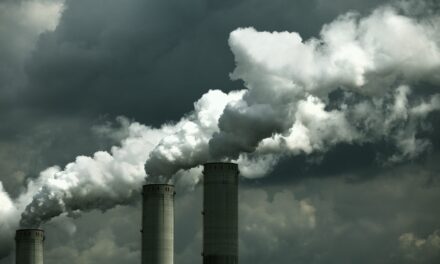Remember those “unprecedented” wildfires last year in Texas and across the rest of the Southwestern United States? If you don’t let me remind you, or rather watch this video:
Well either global warming is real or God really has it in for Texas, big time. Again. Because this year an “unusually” (when will reporters stop using that adverb in relation to the new normal in weather?) early and warm spring has led to an infestation of venomous snakes in — Texas:
(cont.)
With temperatures in the 70s and 80s following a wet winter and spring, venomous snakes are making their presence known across North Texas: in flower beds, woodpiles, parks and golf courses.
And with more snakes have come more snakebites. […]
The biggest reason for the resurgence of snakes has been the weather. This spring has been a perfect storm for snakes, experts say.
“We’re coming off a very dry year, and they like rain and humid conditions,” said Jonathan Campell, a biology professor at the University of Texas at Arlington. “The rains that we’ve had recently tend to be conducive to snake activity.”
Remember the flooding in the Midwest and Northern Plains states last year? I do. Here’s a quick review for you.
Flooding along the Mississippi:
From April 14–16, the storm system responsible for one of the largest tornado outbreaks in U.S. history also produced large amounts of rainfall across the southern and midwestern United States. Two more storm systems, each with heavy rain and tornadoes, hit in the third week of April. In the fourth week of April, from April 25–28, another, even more extensive and deadly storm system passed through the Mississippi Valley dumping more rainfall resulting in deadly flash floods. [19] The unprecedented extensive rainfall from these four storms, combined with springtime snow melt from the Upper Midwest, created the perfect situation for a 500-year flood along the Mississippi. […]
As flood waters proceeded down the Lower Mississippi from the St. Louis area (where the Missouri River and the Mississippi River converge), they affected Missouri and Illinois, then Tennessee, Arkansas, Mississippi, and Louisiana.
In South Dakota:
On June 1, nearly 3,000 people in Pierre and Fort Pierre were evacuated.[29]
On June 3, South Dakota governor Dennis Daugaard urged residents in the Country Club section of Dakota Dunes (which is below Gavins Point Dam) to evacuate. He noted that it might be two months before they could return.[30]
On June 21, South Dakota reported its first flood fatalities when two women drowned in Lyman County, South Dakota after they drove their car down a washed out road.[31] On the same day Pierre, South Dakota officials estimated costs from the flood would be $13.2 million for that community.
Take a look:
In North Dakota:
June 24, 2011|By the CNN Wire Staff
Floodwaters gushed Friday into Minot, North Dakota, inundating thousands of residences and businesses, with water reaching mailboxes in some places, officials said.
The Souris River surpassed the all-time high of 1,558 feet set in 1881, according to the National Weather Service. The level was 1,560.13 on Friday evening.
And in Iowa
Now this year, the people in Idaho have reason to be concerned that they may be next:
The effects of global warming are making it more difficult for reservoir managers to control floods and manage flows for irrigation, recreation and fisheries.
Two days of record high temperatures and two days of record rainfall the same week in late April sent 26,000 cubic feet per second surging into the Boise River dam system, forcing federal river managers to increase flows to more than 8,100 cfs — the highest flow out of Lucky Peak Dam since 1998 and just the second time it has hit 8,100 in 30 years. […]
Despite better modern equipment, [Patrick McGrane, manager of river operations for the Bureau of Reclamation’s Pacific Northwest Region] said, “Our forecasts were more accurate in the ’60s through the ’70s than they are now.”
The more variability in the climate, the harder it is for the two federal dam-managing agencies to balance their competing tasks of preventing floods while filling the reservoirs to provide water for various uses.
More variability in the climate means we cannot predict future extreme weather events, such as flooding, even though our the equipment used by the Corps of Engineers and the Bureau of Reclamation is light years more advanced that what was available 30-40 years ago. When weather patterns are unpredictable, planning for potential disasters of these recent magnitudes is an ever more difficult task. And this is a worldwide phenomenon. For example, the Indian Monsoon season:
Reliable medium range prediction of monsoon weather is crucial for disaster preparedness. Weather in tropics, controlled by fast growing convective instabilities is, however, intrinsically less predictable than that in extra‐tropics. Increased frequency and intensity of extreme rain events in the tropics in the backdrop of global warming has a potential for further decreasing the potential predictability of the tropical weather. Using nonlinear dynamical techniques on gridded daily rainfall data over India for 104 years (1901–2004), here we show that the deterministic predictability of monsoon weather over central India in the latest quarter of the period has indeed decreased significantly compared to that in the earlier three quarters. The decrease of initial error doubling time from approximately 3.0 days to 1.5 days is consistent with higher frequency of extreme events and increased potential instability of the atmosphere in the recent quarter.
And the Inuit have noted that the weather patterns in Alaska over the last several decades have become increasingly unpredictable, anectodal evidence that is now validated by scientific research into the historical data record:
BETSY WEATHERHEAD [climate scientist at the Un iversity of Colorado]: Well the Inuit for about 15 or 20 years have been complaining that the weather is ogianaktook (phonetic) or less predictable, it changes suddenly and quite critically this interrupts many of their natural activities as they would like to partake in. For instance going out on a three or five-day whale hunt suddenly becomes dangerous if they don’t feel like the weather is going to hold for that period of time.
I got these reports from an anthropologist colleague of mine who lives with the Inuit and I as an atmospheric scientist took a look at the actually data and found that what they’re talking about was right there in the data.
The cold spells are not lasting quite as long, the warm spells aren’t lasting quite as long and it occurs primarily in their springtime. So it’s very interesting to me that they pointed out something critical about the way the earth was changing that my scientific colleagues and I had really not been in tune with, until they said please focus on this. […]
[W]e always knew that global temperatures were changing that the average temperature was changing in the winter that it was changing in the summer. So we understood about the mean levels. We also understood that climate change could be affecting the really dramatic events, for instance hurricanes, typhoons, tornadoes, that that might be influenced by climate change.
But what the Inuit brought us to look at is how everyday weather may be changing.
Here’s an example of how climate change is making medium range weather forecasting more and more unreliable. In October, Accuweather predicted a brutal winter for Northern states, dominated by heavy snowfall below freezing temperatures. In December, The Weather Channel predicted a return to colder than normal temperatures for the Northern US. during January, February and March. Well, we all know now how those forecasts worked out.
In February, it was already apparent that winter temperatures and precipitation for most of the country had been warmer and drier than predicted, by a large margin. Then came March:
Record and near-record breaking temperatures dominated the eastern two-thirds of the United States and contributed to the warmest March on record for the contiguous United States, a record that dates back to 1895. More than 15,000 warm temperature records were broken during the month.
Meanwhile, Europe was in the grip of one of its colder winters in recent memory. Brutally cold, while we in the US basked in our mild weather and early spring, Eastern Europeans suffered record cold.
Temperatures have hit 100-year lows in some parts of the region, nearing minus-25 degrees F., well below the usual level. The death toll across the region now tops 200 – roughly 30 in Poland, 22 in Romania, at least 10 in Bulgaria, and more than 160 in Ukraine, where many people reportedly froze to death on the streets. In Serbia, almost 12,000 people are said to be isolated, trapped in remote villages and farmsteads.
We should stop calling these weather patterns “unusual” or unprecedented. It should be clear by now that climate change is adding increased variability to weather systems around the world. In short, we should expect the unexpected. Heat waves will be more intense and pop up increasingly in places that, in previous centuries were rare events, such as Russia in 2010. In like manner, we in America won’t be able to know, with any degree of certainty, from one winter to the next whether we will experience record snowfalls (as in the so-called Snowpocalypse of 2010) or much less snow such as this year.
Last year in Texas it was wildfires due to drought. This year, snakes thanks to a warm. but wetter winter. Climate change in both cases is the culprit, the underlying cause. And don’t expect more predictability in the future, expect less. The future all those climate scientists, such as James Hansen, warned us about back in the 80’s — well it’s here, now and it’s going to get worse with countries like China and India increasing their carbon emissions, and the US government unable or unwilling to take the lead in addressing this crisis.





